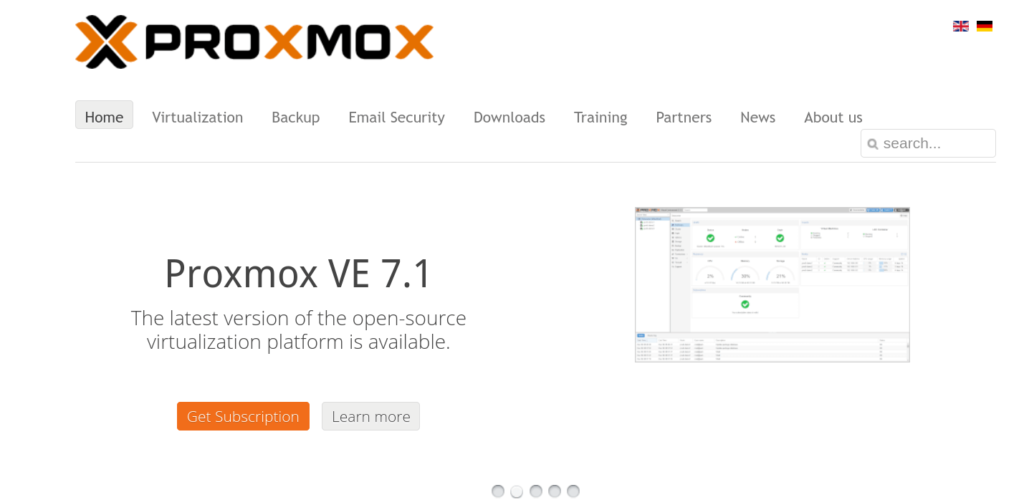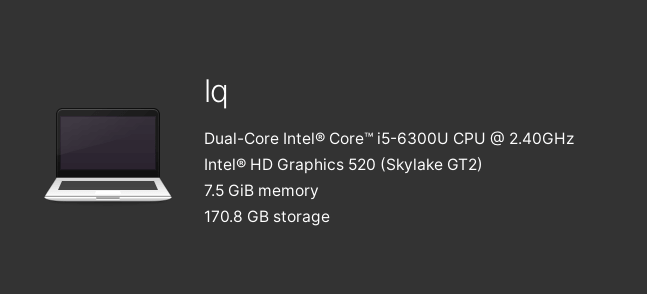Cloud – a trend. But what comes next?
The experts see “the anti-cloud” on the horizon.
What will that be? And why?
What is an anti-cloud?

An anti-cloud is a server (computer) that stores all private data and offers all personal applications, games, and services in every person’s private home. Whether on a laptop, VR headset, large TV or small smartwatch, they all use the computing power and intelligence of the anti-cloud.
The Anti-Cloud helps the person to work, live, play and communicate securely with other people. The Anti-Cloud is as individual as the person themselves and is optimised for privacy and security.
Privacy: If your data is stored on a server outside your home, you can never be 100% sure where the server (and the data) is really located. You have to trust the service provider with everything and be sure that they won‘t do any mischief with your data.
Higher security: The public, well-known and largest cloud providers are the number one target for hackers. A small home server must be secured against bot attacks, but is unlikely to be a target of a meticulously planned attack. Instead of spreading the entire risk across a few cloud providers, the risk of a hack is spread much more widely if everyone uses a mini server.
Bamboo cables: Most countries are Internet developing countries, even rich countries like Germany. The Federal Network Agency is negotiating with internet providers whether 10 Mbit, 30 Mbit or 50 Mbit should be the “minimum” standard. Germany has slept through 20 years of expansion and bureaucracy is stifling new expansion phases. Your cloud service delivers 1 Gbit per second, but you can only use 1% of it. Most of the time you use your cloud services from home. The closer the server is to your end device, the better the performance.

Latency: All applications that are supposed to work in real time do not work well with the cloud. Every request, no matter how small, has to be routed via several servers. This costs time (latency). Even under optimal conditions, the best connection barely delivers acceptable values for gaming, video editing, audio production or VR headsets.
Computing power: If you want guaranteed computing power, virtual solutions are not an option. A dedicated server is a poor compromise because the latency to the remote server remains. Be prepared for the future if you want to have latency-free (graphics) power available for your VR headset, gaming or mobile phone.
Save power: Does your private server need to run around the clock? Do hackers need to be able to attack you around the clock? No. You can switch off the computer and save electricity.
Costs: After a few years, the purchase of a private server pays off. The provider earns good money, although electricity and hardware are many times cheaper.
Tutorial – Your first anti-cloud
How to get your own anti-cloud:
Correct planning
1. Make a list of all the services you want to use on your server
z. E.g. a cloud for your images
2. Evaluate each cloud service to see if it stores valuable data about you? Can the data be made public?
e. g. You don’t want any private photos of yourself on the darknet.

3. Choose a server that meets your needs. How much RAM, CPU, and storage are required for the next 5 years?
z. E.g. 8 GB RAM, 2.5 GHz, 1 TB HDD for 200 GB images – should last 5 years
The right hardware
Mini computers: Raspberry Pi’s and mini-NAS systems are super cheap and can be expanded with larger memories. You get a performance boost even with the cheapest systems because you can utilise the full bandwidth of your home network for the first time.

Old computer: You have an old desktop computer at home. Dust off the hardware and install a lightweight Linux / NAS system on it. If the latest games no longer run on the box, you can scroll through music, films, and pictures at 1 GB/s or 100 Mbit/s.
Professional rack: Are you an IT enthusiast? Build yourself a rack / tower server. If you’re buying real server hardware, think about where best to place the server to minimise noise and heat.
Flexible software for you
4. Choose open source software or buy suitable software.
z. E.g. Nextcloud or Kodi
5. Set up the software or ask a specialist.
e.g. Proxmox / Docker / ready-made images

6. Transfer your data from the cloud to the anti-cloud.
z. E.g. upload the images to the cloud
7. Enjoy the performance boost, increased security and lower costs.
z. E.g. retrieve high-resolution images in microseconds and load 8K videos without a delay.
Disadvantages of the anti-cloud
Maintenance: You have to take care of your cloud. Some open source projects greatly reduce maintenance work and make cloud solutions for complete beginners.
Availability: If your server goes down for any reason, very few users have a spare server that can step in within seconds. I think this risk is overrated. Imagine that your car no longer starts. That happens from time to time. Such cases are no reason to buy another car, and you will have to manage without your car / your anti-cloud for a few hours (days).
Scalability: If you suddenly have the idea of calculating a huge data set in a few seconds, then you need more resources. If you realise that your anti-cloud is too weak, then you require more resources (GPU, CPU, RAM …). Book a cluster in the cloud for such “emergencies”. The majority of your data remains protected.
How can a person without IT knowledge operate an anti-cloud?
Book a service: You don’t usually maintain your home heating system yourself. You can pass the work on to a professional. This could be your trusted mate or a good professional via remote maintenance, which you don’t pay for with your data (i.e. money).
Use simple systems: Nowadays, you can use software with little effort. Auto-installation, auto-update and graphical user interfaces greatly simplify use. A non-technical person can enjoy their own anti-cloud with a little familiarisation.
Don’t run everything: If you store the most important personal data at home, then you have achieved a lot. You can continue to use complex services that are difficult to host yourself in the cloud.
Anti-cloud systems in 2024
- Ready-made NAS systems: With just a few clicks, you can buy a ready-made NAS system and integrate it into your home network ready for use.
- Gaming server: Some ship their gaming hell machine (loud and hot) to the garage and put a long network / Thunderbolt / USB cable in their gaming room.
- Home server scene: Nextcloud, Kubernetes or VM. IT-savvy people build their own systems.
